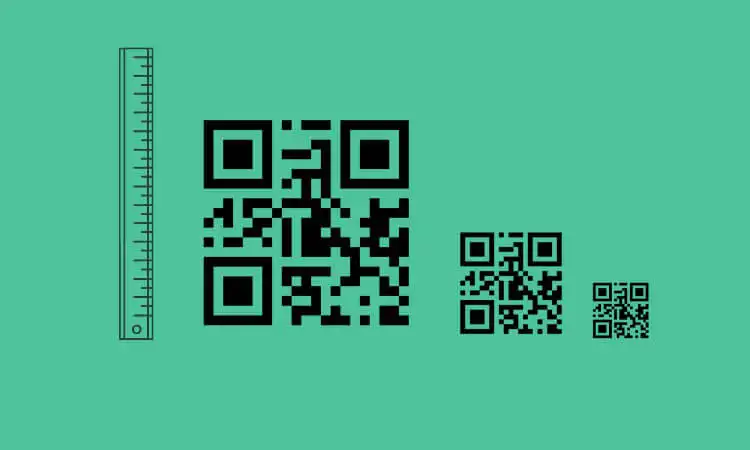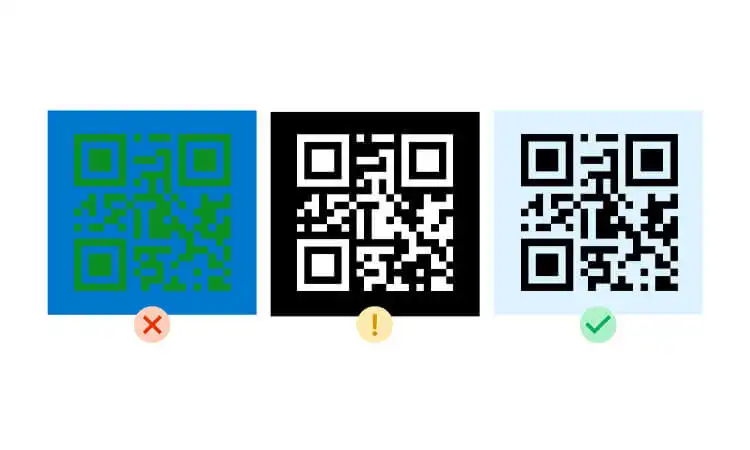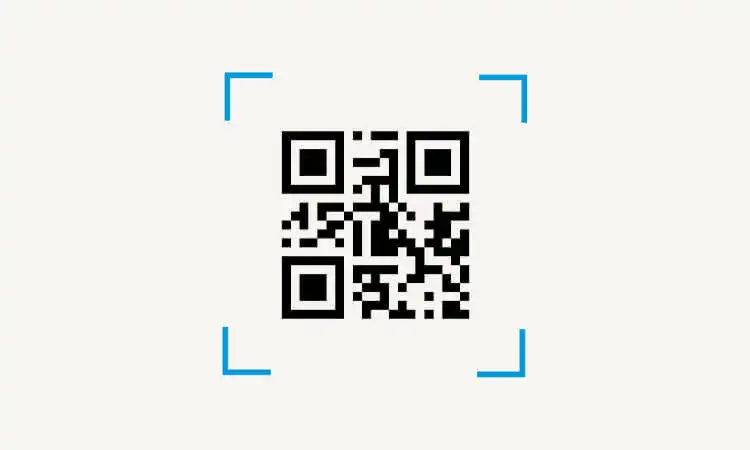QR codes have become ubiquitous in today’s digital world. From marketing campaigns to event tickets, these codes are used to store and transmit information quickly and efficiently. But did you know that there are different standards for QR codes? This post dive into the various QR code standards and what they mean.
QR Code Basics
Before we dive into the different standards, let’s start with the basics. QR codes are two-dimensional barcodes that a smartphone camera can scan. They can contain various information, including website URLs, contact information, and product details. QR codes are a great way to provide customers with additional information about your business or products without taking up valuable space on a physical object.
QR Code Types
QR codes come in two main types: static and dynamic. Static QR codes contain fixed information that cannot be changed once the code is created. Static QR codes include codes containing a website URL or contact information. On the other hand, dynamic QR codes can be edited and updated as needed. This makes them ideal for marketing campaigns or other situations where the information may change over time. With dynamic QR codes, you can update the information without having to create a new code. This can save time and money and make your marketing campaigns more effective.
QR Code Standards
QR codes are created using different standards, each with its own specifications. These standards define the QR code’s size, shape, and data encoding requirements. The first QR code standard was established in 1997 by AIM International, followed by JIS X 0510 in 1999 and ISO/IEC 18004:2000 in 2000. ISO/IEC 18004:2015 is the most widely used standard today and defines the requirements for the QR code format. The latest standard, ISO/IEC 23941:2022, established in May 2022, defines the requirements for a Micro QR Code, a smaller version of the QR code that can hold less data.
QR Code Payment Standard
QR code payments have become increasingly popular in recent years, with several payment standards available globally. Some of the most popular ones include Alipay, WeChat Pay, and PayPay. These payment systems allow customers to initiate transactions by scanning a QR code with their mobile devices. The QR code typically contains information about the merchant, the payment amount, and other details required to complete the transaction. The specific payment standards and requirements can vary by country and payment provider.

QR Code Quality Standard
ISO/IEC 15415:2011 and ISO/IEC 15416:2016 are international standards that define the quality parameters for 2D barcodes, including QR codes. These standards specify the requirements for evaluating the print quality of a QR code, such as contrast, modulation, and symbol contrast. Adhering to these standards allows QR codes to be reliably scanned and decoded by imaging devices. If QR codes do not meet these quality standards, they may be difficult to scan or decode, leading to errors in data collection or transaction processing.

QR Code Format Standard
ISO/IEC 18004:2015 is the international standard for the QR code format. This standard specifies the QR code’s size, shape, error correction coding, and data encoding requirements. By adhering to this standard, imaging devices can reliably scan and decode QR codes. Standardizing the QR code format ensures that QR codes can be read by any device or software supporting the QR code standard, regardless of the manufacturer or location.

QR Code Formats
In addition to the above QR code standards, there are also different formats of QR codes. These formats include Micro QR codes, iQR codes, SQRC codes, and FrameQR codes.
Micro QR codes are smaller versions of QR codes and can hold up to 35 numeric characters or 21 alphanumeric characters.
QR codes are square ones that can hold up to 2,048 alphanumeric characters.
SQRC codes are QR codes that can store both digital and analog information. They are commonly used in the automotive industry.
FrameQR codes are QR codes that have a frame around them. From URLs to text messages, QR codes can hold up to 4,296 alphanumeric characters, providing a versatile and efficient way to store and share information.
Differences Between QR Code Model 1 and Model 2
The main difference between the Model 1 and Model 2 QR codes is their capacity. The Model 1 QR code can hold up to 7,089 numeric characters or 4,296 alphanumeric characters. The Model 2 QR code, on the other hand, can hold up to 7,089 alphanumeric characters or 2,953 binary characters.
Another difference between the two standards is their error correction capability. The Model 1 QR code has a lower error correction capability than the Model 2 QR code. This means the Model 2 QR code is more resistant to errors caused by dirt, damage, or poor printing quality.
Factors Affecting QR Code Readability
In addition to the different QR code standards, several factors can affect the readability and functionality of QR codes. These include:
Size
QR codes come in different sizes, and the size of the code can impact its readability. Larger codes are generally easier to scan than smaller ones, so if you want to ensure that your code is readable, it’s best to use a larger size.
Contrast
The contrast between the QR code and its background is crucial for its readability. High-contrast codes are easier to scan than low-contrast ones. If your code has low contrast, it may not be easy to scan, and users may lose interest in trying to scan it.
Error Correction
QR codes are designed to be able to withstand some level of damage or distortion, but the level of error correction used can impact their readability. Higher error correction levels can help ensure that codes remain scannable even if they become damaged or distorted. If you want to ensure that your code can be scanned in various conditions, it’s best to use a higher error correction level.
Choosing the Right QR Code Standard
When choosing a QR code standard, it’s important to consider your specific needs. For example, Model 2 might be the best choice if you’re looking to store multimedia content. Micro QR might be a better fit if you’re working with a small object like a business card. And if you’re dealing with complex data sets, QR codes might be the way to go.
Regardless of your chosen standard, it’s important to ensure your QR code is scannable and easy to read. Ensure your code is large enough to be scanned from a distance and there is enough contrast between the code and the background. And always test your code before printing it on a large scale.
QR codes are a powerful tool for businesses looking to connect with customers. By choosing the right QR code standard, you can ensure that your code is scannable, easy to read, and provides the information your customers need. Whether you’re storing simple text or complex data sets, there’s a QR code standard that’s right for you.
Frequently Asked Questions (FAQs)
What is the ISO for QR Codes?
ISO/IEC 18004:2015 is the international standard for QR codes. This standard defines the QR code symbology requirements, including the code’s size and shape, error correction coding, and data encoding. Following this standard, imaging devices can accurately scan and decode QR codes. You can purchase the ISO/IEC 18004:2015 standard from the International Organization for Standardization (ISO) if you need more detailed information. Adhering to the QR code standard ensures that your codes are compatible with any device or software that supports the standard, regardless of the manufacturer or location.
What is the standard QR Code resolution?
The minimum recommended resolution for a standard QR Code is 38 x 38 pixels, but the optimal size can vary depending on the intended use, distance-to-size ratio, and scanning distance. If displaying a QR code on a screen, it’s best to use a size of at least 240 x 240 pixels at 72 dpi for optimal scanning. However, remember that factors such as printing specifications, display type, and pixel pitch can affect the minimum resolution.
What is the largest standard QR Code?
QR codes can hold a significant amount of data, with a maximum symbol size of 177 x 177 modules, which can contain up to 31,329 squares. This large number of squares allows QR codes to store up to 3KB of data. To put this in perspective, a QR code of this size can hold up to 7,089 numeric characters or 4,269 alphanumeric characters. Compared to traditional barcodes, which are limited to storing only a few dozen characters, QR codes are an efficient way to store and transfer information.
What is the recommended print size for the QR code?
For most close proximity use cases, a good baseline size for a QR code is 1 cm x 1 cm, around 38 x 38 pixels. However, for printing QR codes on small to medium-sized products like flyers or business cards, the QR code should be at least 0.4 inches x 0.4 inches (1 cm x 1 cm).
To ensure optimal scanning, the ideal size-to-distance ratio for a QR code is 10:1. This means that if a QR code is intended to be scanned from a distance of 10 meters (32 feet), it should be roughly 1 meter (3.2 feet) wide and tall. For example, if a QR code is intended to be scanned from a distance of 20 meters, it should be 2 x 2 meters in size.
Remember that the minimum size of a QR code should be determined by the amount of data it contains. The more data the code contains, the larger it should be to ensure it can be scanned easily.








